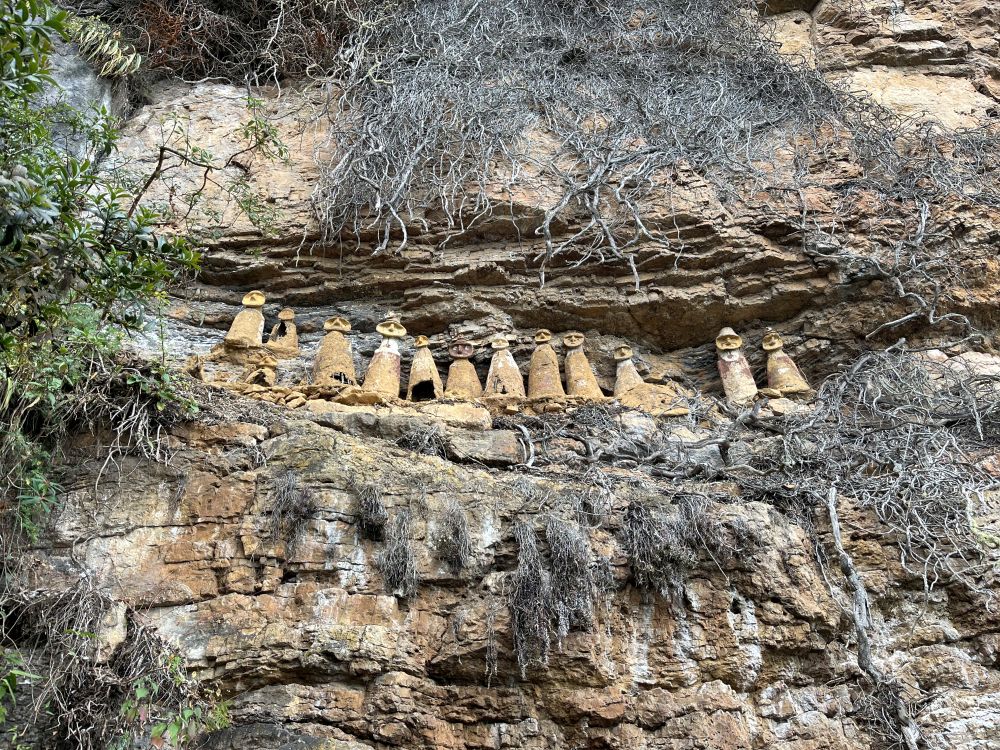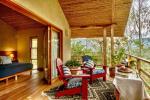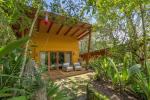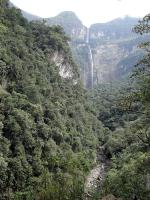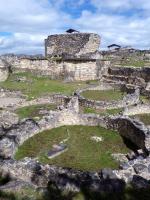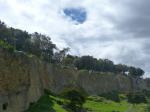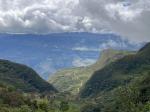I have been lucky enough to visit Peru multiple times over the past 20 years but have never had the chance to travel through this little known and little visited northern region. Bordered by Ecuador to the north and west, I had heard of the stunning scenery here, from steep river gorges, to Andean peaks, and vast swathes of cloud forest. It was even more impressive first hand than I could have imagined.
Gocta Natura Reserve
A daily 1 hour 30 minute flight from Lima to Chachapoyas is the easiest and quickest way to access the region. Chachapoyas, the capital of the Amazonas, serves as the gateway to the areas cloud forest, stunning archaeological sites and natural wonders. Founded in 1538 by the conquistador Alonso de Alvarado, the city is known for its colonial architecture, the Plaza de Armas (main square), and its high-altitude location at 2,335m.
My home for the next few nights was Gocta Natura Reserve, on the edge of the small village of Cocachimba, about an hour’s drive from Chachapoyas city. Set within six hectares of lush forest, Gocta Natura has a strong focus on environmental protection, particularly with reforestation efforts that help preserve the habitat of endangered species. Surrounded by plentiful native trees, bromeliads, and orchids around my cabin, this was the perfect base from which to explore this incredible part of Peru and learn about the rich heritage of the Chachapoya people, or “Warriors of the Clouds”.
For more information on Gocta Natura see www.lastfrontiers.com/hotels/peru/chachapoyas/gocta-natura
Its legacy spans multiple archaeological sites dating from 500 to 1500 AD, and offers a glimpse into a little known about pre-Columbian civilization. Gocta Falls, with a total height of 770m, can be seen, and accessed directly from Gocta Natura Reserve. Hiking along the side of a valley through sugar cane fields and into cloud forest, you may glimpse the yellow-tailed woolly monkey, the Andean cock-of-the-rock, and the occasional sloth on the way. There are many different excursions to choose from in this region and I will detail below perhaps my two favourite from my time in Amazonas.
Kuélap
Many visitors travel to the Amazonas region to visit Kuélap, a huge Chachapoya mountaintop citadel overlooking the impressive Utcubamba valley. Built from the sixth century AD on a 3,000m ridge, the settlement covers an area of about six hectares, is 584m long and has finely constructed limestone block walls, some of which are up to 20m high.
Reaching the citadel itself was an exhilarating experience. Close to the small town of Neuvo Tingo, just 1 hour 10 minutes from Chachapoyas city, an official shuttle bus dropped my excellent guide Johan and I at the embarkation point for the cable car journey to Kuélap. Saving around a two hour drive, the cable car covers the 4km span over the Utcubamba valley in around 20 minutes. The views from the gondola as we soared over the valley, gaining 1,000m in altitude, were incredible (and not for the faint hearted)
Disembarking the cable car still left us with a 25 minute uphill walk to reach the citadel itself, which due to the altitude was taken at a gentle pace (There are horses available for those who would prefer to ride!) The sheer scale of the site became apparent as soon as we approached, and the remarkable engineering of the stones was truly impressive. Quite how the Chachapoya people managed to construct this enormous site, with over 400 separate circular buildings, for me was mind blowing. The sheer drop from the site down three sides of the mountain would have made a formidable obstacle to any enemies of the Chachapoya.
El Tigre Sarcophagi
One of the most fascinating aspects of Chachapoya culture is the way in which they mummified their dead. As well as creating ornate tombs, often taking the form of sarcophagi, they also created these funerary sites in incredibly difficult to reach locations, on sheer cliff faces overlooking vast valleys. The sarcophagi at Cerro El Tigre were only rediscovered in 2013, high on a cliff face at 2,800m, with the use of a high powered camera. Very few people get to see the El Tigre Sarcophagi partly due to them only being rediscovered relatively recently, but also where they are located. To reach them we drove around 1 hour 20 minutes from the village of Cocachimba, high in to the mountains on a windy road, passing through patches of farmland and tiny villages, until we reached the village of San Jerónimo. This is where the road literally ends, and to reach the sarcophagi, the only way is to hike. Local law dictates this can only be done if you are accompanied by a local guide. This makes perfect sense as not only would we not have found the site by ourselves, but the local guides also act as guardians making sure none of the artefacts are disturbed.
To be taken as a compliment, our local guide from San Jerónimo, Gladys, was more akin to a mountain goat and soon had us breathing hard as she set the pace on the first section of the trail, which was unsurprisingly, uphill. The overall distance we covered was approximately 5km, however in that time some 700m were gained in altitude. The last section of the hike to reach the sarcophagi was particularly steep through the cloud forest, but the reward was the most spectacular view back down the valley. A short scramble across a platform cut in to the cliff face brought us to multiple, now exposed, funerary sites showing skeletal remains in the recesses, where once they would have been covered. A little further along the cliff face, and even higher above us, stood the El Tigre Sarcophagi. These upright clay coffins, in human shape, with painted faces and jewellery, stand just 70cm tall, leading archaeologists to believe they were designed for the funerals of children. The whole experience was very humbling, and very much worth the hike to get to this incredible site.
I found the Amazonas region and Chachapoya culture stunning and fascinating in equal measure. If you would like to find out more, or see how this could combine with other parts of Peru, please do get in touch.

